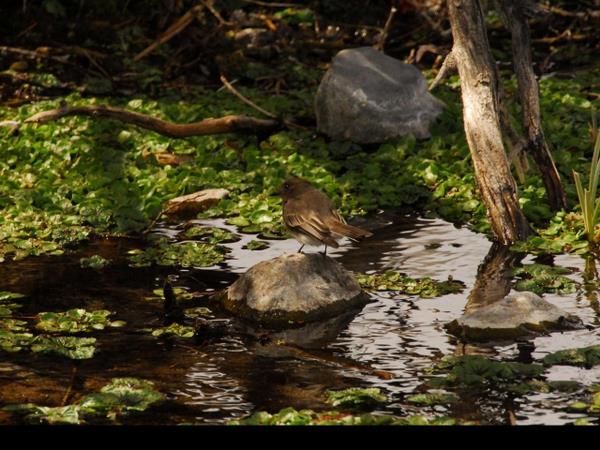
Observers: Donna Willey
Email: basina@verizon.net
Date: 04/07/2008
Time: 03:47 PM -0400
The following photos were taken several days ago, early morning at convict creek. Since the snow has been melting seemingly fast many birds have been arriving at the marshy areas around the creek where I walk in the mornings. The first arrivals I noticed were the ruby-crowned kinglets flitting from aspen to willow to sage and back again in an endless search for food, insects I assume. Several days later (but no photos) I saw a black phoebe. This was my first sighting of a Bl phoebe and he stayed around in the area for approximately 5 days and I haven't seen him since. According to Audubon's FG wanderers found in grasslands and chaparral habitats are thought to be first-year non-breeding birds. Although the creek is a riparian and marshy habitat at the point where I walk surrounding us are mile upon mile of sage and further down toward the lake, grasslands. At the same time small swarms of flies began appearing in the vicinity. Next several days after the phoebe sighting 2 kingfishers began their loud calling back and forth whenever I made an appearance. I believe they also have moved on to more advantageous breeding grounds. I have spotted 4 common snipes which I am hoping to see again. They were early arrivals; I have seen them the past 4 weeks. The photos show the song sparrow and a Lincoln's sparrow and the ruby-crowned kinglet. This is the best time of year to see the returning birds and the birds that stayed the winter as the ground is wet and the trees do not yet have their leaves. I have seen a plethora of meadow-larks and horned larks and am glad to see them. I believe Audubon's may have put the western meadow-lark on their watch list d/t the disappearance of grasslands and sage brush habitat. Their is a small article in the Mammoth Times on the resuscitation of a "frozen" meadowlark. I saw it today as a woman in front of me was reading it. If you can, find a copy of the Mammoth Times and check it out.



